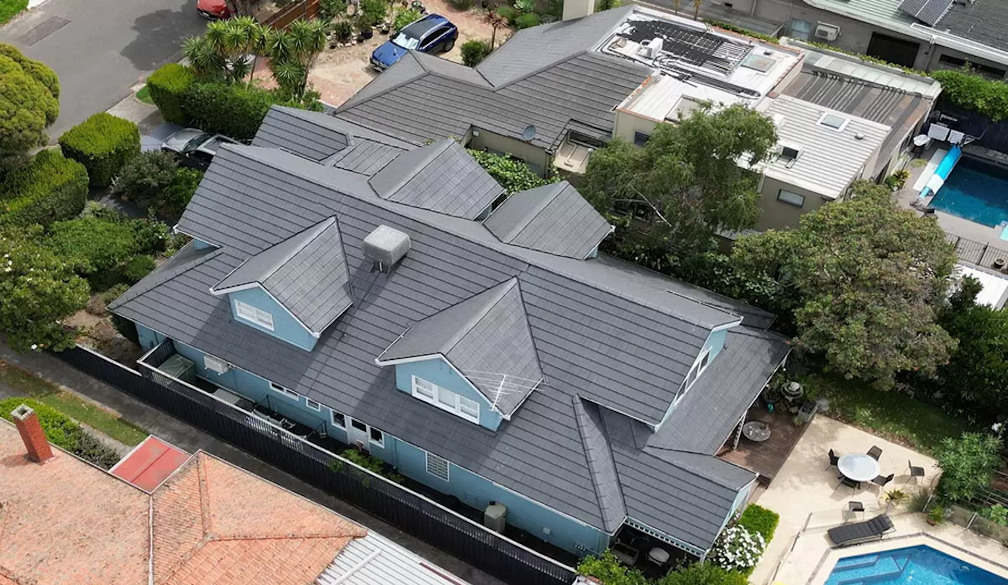How to Check Roof Damage After a Storm

Storms hit hard. They damage roofs all the time. Some people don’t even realize it until water starts leaking into their house or they see brown stains on the ceiling. By then, it’s too late. The damage is done and fixing it gets way more expensive.
That’s why checking for roof damage after a storm matters. It’s the first thing a homeowner should do once the storm passes. Not later. Not next week. Right after the sky clears. Catching small problems early saves money and prevents big repairs.
Why Check the Roof After Every Major Storm?
Because small things turn into big things fast.
A loose shingle can let rainwater sneak under the roof. Over time, that water ruins insulation, rots wood, and causes mould. Some people wait until they see water spots on the ceiling — by that point, the roof could already need a full replacement.
Also, insurance companies can reject a claim if the damage wasn’t reported soon enough. So ignoring the roof after a storm can hit your wallet two ways: expensive repairs and no insurance help.
How to Check for Roof Damage the Right Way
Here’s what to do after a big storm:
- Walk Around the House
Start on the ground. No ladders. No roof climbing. Just walk slowly and look up.
Look for:
- Shingles or tiles lying in the yard
- Broken pieces of gutters
- Bent or sagging downspouts
- Piles of little dark granules near the gutter ends (bad sign — those granules came off the shingles)
If anything looks off, there’s probably damage up top.
- Use Binoculars
Step back far enough to see the whole roof and scan it carefully.
Check for:
- Missing or curled shingles
- Cracked tiles
- Bent flashing around chimneys and vents
- Dented metal parts
If there are tree branches or other debris stuck on the roof, that’s another clue there may be trouble.
- Check the Attic
Lots of people skip this part. Big mistake. The attic is where roof leaks show up first.
Go inside with a flashlight and check for:
- Wet insulation
- Water stains on wood
- Standing water
- Mould smell
- Daylight shining through where it shouldn’t
Also look at ceilings inside the house. Any fresh water stains or bubbles in the paint are warning signs.
- Watch for Tree Damage
If a branch hit the roof during the storm, there’s probably damage — even if you can’t see it from below. Look for tree debris on the roof or near the house.
- If It’s Winter, Look for Ice Dams
Ice dams happen when snow melts and refreezes at the roof’s edge, blocking drainage. This forces water to go under the shingles and into the house.
Inside the house, watch for:
- Paint peeling near the ceiling
- Brown water stains
- Leaks along the walls
- Track Energy Bills
If energy bills suddenly go up after a storm, the roof might be leaking air. Small gaps and holes make heating and cooling systems work harder. If this happens, get the roof inspected.
Mistakes Homeowners Make
- Not checking the attic
- Ignoring small signs like granule piles or loose shingles
- Waiting weeks to check after a storm
- Trying to fix it themselves without proper tools or safety gear
- Hiring door-knockers offering cheap roof repair (lots of scams that way)
Skipping proper checks or repairs means the roof problems get worse fast. What starts as a small leak can rot the wood, damage the insulation, and create a mould problem inside the walls.
What Happens If You Ignore Storm Damage?
Simple. The roof gets weaker. The wood frame under the roof rots. Insulation soaks up water and stops working. Mould grows and spreads. The house smells damp. Ceilings start sagging. Paint peels. Water drips into light fixtures.
Worst of all, if the roof stays this way too long, it might need a full replacement — which costs way more than a small repair would have.
Also, insurance companies may deny claims if the homeowner waits too long or can’t show proof that they checked for damage after the storm.
What to Do After Finding Roof Damage
- Take photos of everything. Shingles on the ground, broken gutters, water stains — all of it. You’ll need this for insurance.
- Call the insurance company fast. Have your policy number ready.
- Stay away from random people offering to fix your roof. There are plenty of scammers after storms.
- Call a real professional. Someone who’s licensed, insured, and trusted.
One company that handles this well is Roof Restoration Melbourne. They check for hidden damage that most homeowners miss. They also know how to fix things properly before small problems turn into big ones.
Summary: Check Fast. Fix Early. Save Money.
Checking the roof after every storm is simple. Walk around. Use binoculars. Check the attic. Don’t skip steps.
If anything looks wrong — even a little wrong — get a pro to look at it. Don’t wait until water drips into the living room. Small damage gets worse fast.
And if you’re unsure where to start, reach out to Roof Restoration Melbourne. They’ve seen it all. They know what to do.





